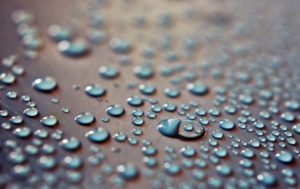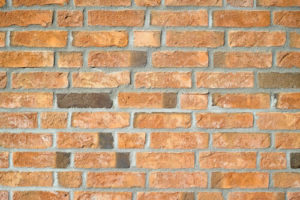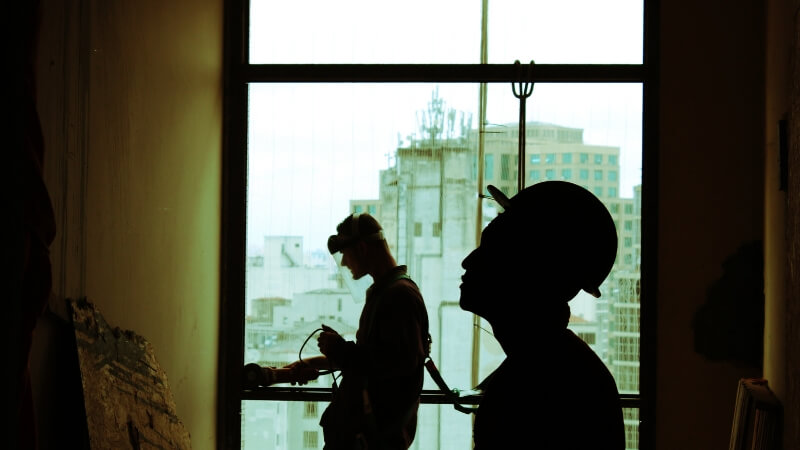If you’ve ever noticed a house with crumbling, cracked, or even missing bricks, the damage has likely been caused by brick spalling. If you’re wondering how to repair spalling brick, keep reading.
Spalling is caused when moisture is absorbed into a brick. When the moisture cools or freezes, it expands and breaks apart the brick.
Buildings located in colder, humid climates deal with spalling because of higher levels of rain and snow. However, even houses in drier weather experience damage from spalling because of poor sealant, leaking windows or roofs, or faulty gutters.
Preventative care is important to fighting off brick spalling in any structure whether it be a home or commercial building.
Here are some tips on how to prevent, recognize and repair brick spalling.
- Regular Maintenance Extends Brick Lifespan
Brick buildings continue to be built because of the enduring elegance associated with colonial style.
Bricks add a regal character to homes and a sense of heritage to retail and commercial locations.
More recently, recycled brick has also been a sought-after material because used bricks are unique and give the impression of quality custom work to homes.
However, bricks absorb moisture well, and regular rain, leaks, or even high-pressure washers can cause spalling that can eventually lead to exterior deterioration and can threaten a structure’s stability.
Maintenance of brick buildings is key to retaining that regal, elegant look. Owners and property managers should conduct regular exterior checks to note any cracks or crumbling in brickwork.
Checks should be done at a minimum once a year. Gutter systems should be well-maintained to avoid constant runoff that feeds water into any bricks. Areas around the basement that are exposed to soil should be monitored.
Masons can also apply a sealant on brickwork to help stop moisture from seeping inside.
Sealants typically should be breathable. It’s difficult to keep moisture completely out of bricks even with a sealant on, and non-breathable sealants can make it harder for water to escape.
Breathable sealants contain microscopic particles that fill small spaces within bricks, preventing water from entering.
As soon as the sealant is applied, blowing the areas with high-pressure air that pushes the sealant further inside the brick will help its effectiveness.
2. Find and Remove Moisture Source

If spalling has already begun, though, there are some steps that can help stop and even remove its effects.
The first thing that should be done when any spalling is spotted is to find the source of moisture.
Fixing or replacing damaged bricks is only a temporary fix if the moisture problem isn’t solved first.
If a window or chimney is leaking water directly onto brick, make necessary repairs so that leaks stop.
Likewise, if any part of the structure has regular, direct contact with water runoff or some other source of moisture, find a way to protect brickwork in the area.
After the moisture issue is resolved, it’s important to capture every area of brickwork with spalling.
Leaving behind spalling bricks means that there are still areas saturated with moisture.
This could lead to ongoing crumbling and cracking even after repairs are done.
3. Locate Replacement Bricks Before Any Repair Work

No building owner wants to remove damaged bricks only to have their replacements stick out like a sore thumb. Mismatched bricks damage a building’s overall aesthetic and can hurt its value.
Take a sample of brickwork to neighboring brickyards and make sure matching materials are available.
One thing to also consider is whether the color in mortar used to place new bricks will match old mortar throughout the building.
Finding a correct match for bricks and mortar is difficult, and typically requires the assistance of an expert.
When asking about replacement bricks, it’s also key to talk about the quality of brick to be purchased.
Any new brick should be graded as severe weathering (referred to as “SW” or “SX”). The severe weathering will better ensure no repeat spalling occurs down the road.
Level of Damage Determines Repair
If the spalling is isolated to a small area of brickwork, then it’s possible that only those bricks and their surrounding mortar seams will need to be replaced.
Only a few bricks can be removed from a structure at a time, so attempting a targeted fix means that the damaged area needs to be relatively small.
Typically, a hammer, chisel and masonry cutting wheel are used to cut out damaged bricks and mortar.
After the damage bricks are out, the area needs to be thoroughly cleaned of any remaining moisture, dust or dirt. New mortar is then placed around the hole and replacement bricks can be inserted.
The level of skill required to mirror existing mortar seams with a similar look and finish is very difficult. When in doubt it’s always best to hire a professional mason.
Much more significant repairs are required when spalling is extensive. Often, entire walls, chimneys, and other parts of buildings need to be completely rebuilt to eradicate spalling.
Rebuilding is usually recommended if a collapse can threaten further damage to a house. Total replacement can mean higher upfront costs but long-term savings if regular patchwork repair is needed.
Only skilled masons should attempt to repair widespread late-stage spalling.
There’s nothing quite like the beauty of a quality brick building. Brick exteriors have been a favorite of home buyers for decades.
Making the effort to keep up with a building’s brickwork maintenance always pays off long-term. Conducting regular checks on brick condition and making sure there is no ongoing moisture exposure are keys to extending the lifespan of homes and other brick structures.
Finding a local knowledgeable brick mason to assist with any check and repairs will help fight off spalling and make any necessary repairs that maintain a building’s look and feel.



